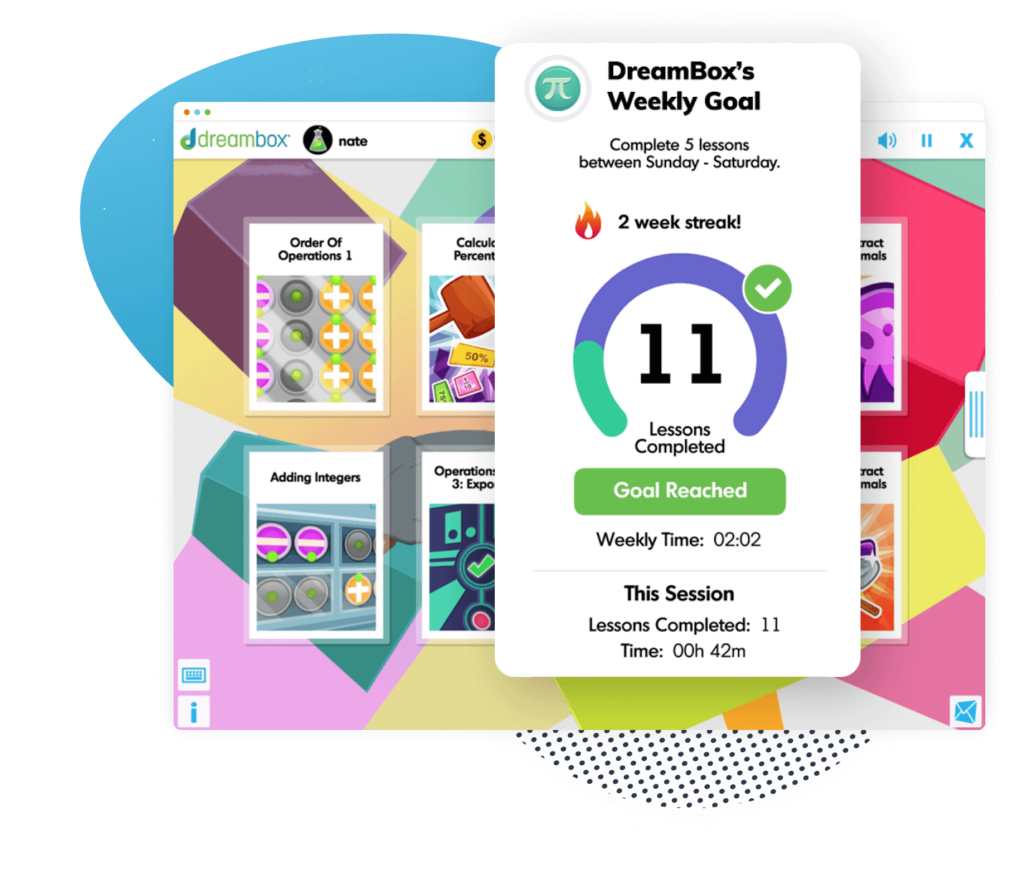First grade subtraction word problems
Discover fun and effective ways to teach 1st-grade subtraction word problems.

Author
Tess Loucka
Published:
July 2025
Key takeaways
- • In 1st grade, students are shown how subtraction applies to real-world situations using word problems.
- • Subtraction word problems teach children problem-solving and critical thinking skills, improve their memory, and give them a deeper understanding of subtraction.
- • Some word problems provide unecessary information which can distract students from finding the correct answer.
You can’t get through life without knowing how to subtract. Whether you’re figuring out your finances, adjusting recipes while cooking and baking, or simply trying to manage your time, you won’t get far without subtraction skills.
While students are introduced to the concept of subtraction in pre-K and kindergarten, subtraction truly comes into focus in 1st grade.
So, let’s talk about subtraction word problems 1st grade students should know how to solve and why they are important.
What are subtraction word problems for 1st grade?
In pre-K and kindergarten, students are introduced to simple subtraction problems formatted using numbers and symbols. Think 2 – 1 = 1.
In 1st grade, the concept of subtraction is taken out of the realm of numbers alone and placed into a real-world context, allowing students to better understand how subtraction is used in daily life.
Word problems teach students skills like problem-solving and critical thinking better than simple equations can. They stretch students’ imaginations, improve memory, and challenge them in new ways, making them essential tools for early math education.
Table of contents
Get more practice with fifth grade math with DreamBox!
How to teach subtraction word problems effectively
Combining real-world situations with numbers can be distracting and make solving problems difficult for many students. Getting over that initial hurdle is difficult, and simply reading word problems and trying to solve them may not always lead to positive results.
Luckily, there are techniques you can use as a parent or educator to make solving word problems easier.
Using visual aids and manipulatives
When looking at words is not enough, try using counters, number lines, dice, color cubes, snap cubes, an abacus, or any other physical representations to visualize the word problem. If you don’t have tools handy, try drawing pictures!
Additionally, online math programs or math apps often include visual demonstrations of math concepts, like subtraction, that are easy for children to understand.
Encouraging math talk and reasoning
Math talk is simply talking about math problems out loud, rewording the problem as needed or placing it in a different, more understandable context, to make it easier to solve.
So, when your child is working on word problems, ask them to explain the problem to you in their own words, ask them open-ended questions that could lead to a solution, and be patient!
Math talk promotes a deeper understanding of the task at hand and improves children’s reasoning skills.

The math program that drives results
Get started today!
DreamBox adapts to your child’s level and learning needs, ensuring they are appropriately challenged and get confidence-building wins.
20 1st grade subtraction word problems
Let’s look at some common types of subtraction word problems 1st grade students will be expected to solve in class and on exams.
10 one-step subtraction word problems
One-step subtraction word problems offer two numbers that need to be subtracted.
1. Rachel had $10. Then, she purchased a slice of cake for $2. How much money does she have left?
2. A group of 5 friends went to the park together. After an hour, 2 friends went home. How many friends are still at the park?
3. Michelle had 14 books on her shelf. She took down 5 books. How many books are on her shelf now?
4. On a safari, Liam saw a group of 8 lions laying on a rock. He watched 3 get up and walk away. How many lions were left on the rock?
5. Mary-Ann had 11 dresses in her closet. After giving away some dresses to her friends, she only has 7. How many dresses did Mary-Ann give away?
6. Pedro baked a batch of 10 cookies and ate 5 of them. How many cookies are left?
7. There used to be only 12 trees growing on a city street, but now there are 15. How many new trees were planted?
8. Jim bought a pack of 18 paintbrushes but lost 7 of them. How many paintbrushes does Jim still have?
9. Mr. Donaldson started with a total of 9 golf clubs. He loans 6 of them to his coworkers. How many golf clubs does he have left?
10. A family of 8 go see a movie together. However, some members had to leave early. By the end of the movie, only 6 family members remain at the theater. How many family members left early?
10 real-life scenario subtraction word problems
Word problems come in many sizes. Some are short and sweet, and some are long and complex! Longer problems tend to offer unnecessary information, challenging students to determine which information is important and overlook the information that isn’t.
Read the following word problems carefully! Focus on the essential information and ignore everything else.
1. Pierce goes fishing every morning at 6:00 a.m. He wishes he could fish for 10 hours a day. However, Pierce has to leave by 11:00 a.m. for lunch. By the time Pierce leaves, how many hours in total did he actually end up fishing?
2. Mr. Fredrickson is surveying his 1st grade class of 20 students to find out what ice cream flavors his students like the most. He finds out that 11 of his students prefer chocolate ice cream, 5 students prefer vanilla, and 4 students prefer strawberry. How many more students in the class prefer chocolate over strawberry?
3. You are filling a fruit bowl with peaches. Each peach is about 4 inches tall and the bowl is about 7 inches tall. You have a total of 13 peaches, but only 8 peaches seem to fit in the bowl. When the bowl is full, how many peaches are left?
4. Miguel and his dad are trying to catch the bus. They have to be at a show by 4:55 p.m. that night and must catch the 4:15 p.m. bus. Miguel and his dad show up at the bus stop 8 minutes early. At what time do Miguel and his dad get to the bus stop?
5. Arnie’s house is 6 blocks away from his school. After school, it takes Arnie 18 minutes to walk home. Yesterday, Arnie discovered a shortcut! If he uses his shortcut, his house is only 5 blocks away and it takes him 3 minutes less to get home. How many minutes in total does it take Arnie to get home from school using his shortcut?
6. Aunt June has 14 apps on her phone. She realizes that she doesn’t use most of them and wants to delete some. Her goal is to have less than 8 total apps on her phone. So, Aunt June goes through her apps and deletes 9 in total. Did Aunt June achieve her goal?
7. You are trying to hang up a framed photo in your room. The framed photo is 6 inches tall and 8 inches wide. You want to hang the framed photo exactly 15 inches away from your window. However, when you finish hanging the framed photo, you realize you hung it 4 inches closer to the window than you originally intended. How many inches away from the window is the framed photo?
8. Claud is teaching an art class at 5:00 p.m. A total of 6 of his students are early, 8 are on time, and 2 are late. If a total of 20 students signed up for his class and only 16 students showed up, how many students never came?
9. Miles and Jonas are playing catch with a baseball. They are counting how many times they throw the ball and how many times they drop it. Miles threw the ball a total of 25 times and dropped it a total of 9 times. Jonas threw the ball a total of 26 times and dropped it only 2 times. How many more times did Miles drop the ball than Jonas?
CHALLENGE QUESTION:
10. Nancy is having a bake sale at school to raise money for her dance club. She made cookies, cupcakes, and lemon bars. In total, she has 19 products for sale. Her bake sale lasts about 3 hours. During that time, she sells 4 cookies to Mr. Driscoll, 1 cupcake to Matthew, 2 lemon bars to Ms. Donner, 5 cookies to Alexis, and 1 cupcake to Ethan. How many products are left after the bake sale?
Take at home math practice to the next level
Empowering parents and educators to make math practice more impactful. Plus, your kids will love it.

One-step subtraction word problem answers
- $10 – $2 = $8 left
- 5 – 2 = 3 friends remain
- 14 – 5 = 9 books left
- 8 – 3 = 5 lions remain
- 11 – 7 = 4 dresses given away
- 10 – 5 = 5 cookies left
- 15 – 12 = 3 new trees planted
- 18 – 7 = 11 paintbrushes left
- 9 – 6 = 3 golf clubs left
- Challenge: 8 – 6 = 2 family members left early
Real-life subtraction word problem answers
- 11:00 – 6:00 = 5 hours fishing
- 11 – 4 = 7 more students prefer chocolate
- 13 – 8 = 5 peaches left
- 4:15 – 0:08 = 4:07 p.m. arrival
- 18 – 3 = 15 minutes using shortcut
- 14 – 9 = 5 apps, 5<8, yes, she met her goal
- 15 – 4 = 11 inches from window
- 20 – 16 = 4 students didn’t show up
- 9 – 2 = 7 more drops by Miles
- Challenge: 19 – 13 = 6 baked goods left
FAQs
Word problems in 1st grade are math problems written using words and sentences instead of equations. They help place abstract math concepts into real-world situations, improving students’ problem-solving and reasoning skills.
Use visualizing tools like number lines, dice, or drawings. Also, encourage talking through problems out loud to promote problem-solving and logical reasoning.
An example of a 1st grade word problem is, Candace had 10 plums but gave 5 to Bruce. How many plums does Candace have left?

About the Author
Tess Loucka
Tess Loucka discovered her passion for writing in high school and has not stopped writing since. Combined with her love of numbers, she became a math and English tutor, focusing on middle- and high-school-level topics. Since graduating from Hunter College, her goal has been to use her writing to spread knowledge and the joy of learning to readers of all ages.